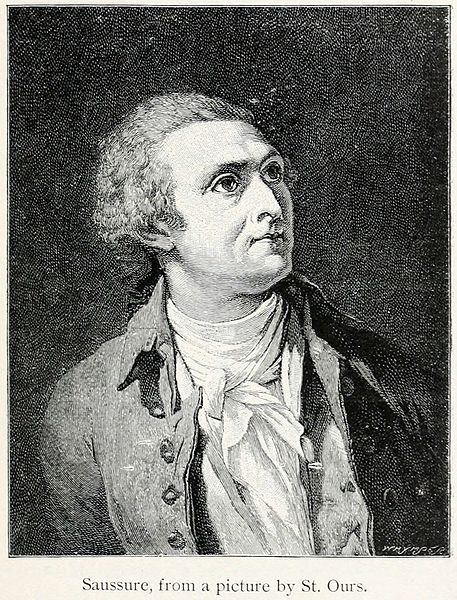“I was desperately anxious to see at close quarters the great Alpine summits which look so majestic from the top of our mountains.” Horace-Benedict de Saussure

Modern mountaineering is said to have begun on 8 August 1786, when Michel Paccard, a doctor from Chamonix, and Jacques Balmat, a farmer, reached the summit of 4810m Mont Blanc, the highest mountain in Western Europe. The seeds had been sown a quarter of a century earlier in 1760, when Horace-Benedict de Saussure, at the time a student at the Geneva Academy, travelled to Chamonix and was so enchanted by Mont Blanc that he offered a reward to the first person to climb it. He hired a guide Pierre Simon, and they travelled and climbed together in the Alps. De Saussure wrote extensively about his travels, and his influence generated a great deal of interest in climbing Mont Blanc. He climbed it himself the year after Paccard and Balmat with a party of 17 people, including Balmat as guide. Mountain climbing as a hobby and pastime for tourists was born, and de Saussure can justifiably be called the father of mountaineering.
The other day I was reading Triumph and Tribulation by HW Tilman, himself a great mountain explorer of the early 20th century, about a journey by boat to the island of Spitzbergen in the Norwegian Arctic. While passing tiny Kijn Island off its coast Tilman was surprised to learn the island was named after an officer from a Dutch cargo ship, who broke his neck while climbing a mountain on the island in 1616.
“To learn that De Saussure’s historic initiative had been anticipated by 150 years or more is like discovering that cricket matches were played every Saturday afternoon in, say, Paris long before they thought of it at Hambledon.” Bill Tilman
But Tilman concluded he probably wasn’t climbing for fun but on business, looking for whales or surveying ice conditions, so he can’t be considered a mountaineer (you’ll see from a previous post I agree with Tilman that mountaineers do it for fun).

Neither can the Ice Maiden of Llullaillaco, somebody else who would have surprised Tilman. The mummified corpse of this 15 year old girl was uncovered in 1999 – the year George Mallory’s body was being discovered on Everest – on the summit of 6739m Llullaillaco in the Puna de Atacama region of northern Argentina and Chile. She had been the sacrificial victim of Inca high priests, who had conducted a ritual to their gods on top of the mountain more than 500 years ago.
Perhaps the grandfather of mountaineering is the Roman emperor Hadrian, who climbed 3329m Mt Etna on the island of Sicily in 125AD to witness the sunrise, to this day a popular tourist activity. He was returning from examining frontier defences in Asia Minor, but this particular excursion wasn’t business.
I don’t know what Tilman would have thought if he’d known about Ötzi, the 5300 year old corpse spotted at 3210m on the east ridge of the Fineilspitze in the Ötztal Alps by two German hikers. His remains were still frozen into the ice of a glacier, and it was later discovered that he’d died from an arrow wound, so might have been fleeing over the mountains from his foe. I like to think he’d chosen to climb into the mountains for his final resting place because he loved them. He must certainly have been a mountaineer to have climbed all the way up there while dying of an arrow wound.
Ötzi is therefore the great great grandfather of mountaineering. It’s a bit like discovering cricket wasn’t invented by an Englishman, but by the Romans. Tilman would have choked on his cucumber sandwiches.






